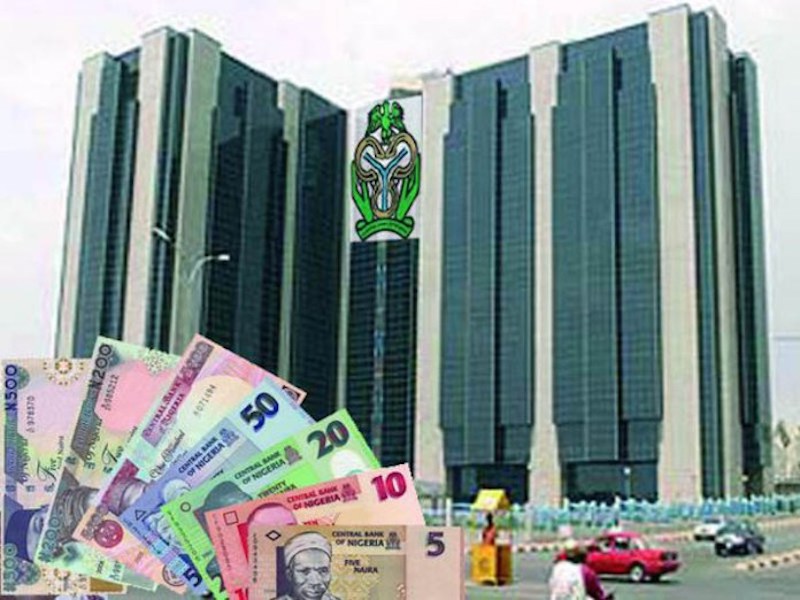By Moses Obajemu
Nigerian banks appear to have adjusted quickly, and nicely too, with respect to the new rules by the Central Bank of Nigeria (CBN) on conditions for accessing its standing deposit facility (SDF), with deposits in the facility falling sharply by more than 300 percent on Friday to close at N34.4 billion. It was N123 billion on Thursday.
Data exclusively obtained by business a.m. showed the net balances in the SDF prior to the changes to the rules by the CBN had been above N100 billion on the average, an indication of banks’ preference to keep their idle funds with the apex bank to earn interest on them at the rate of 10 percent per annum.
On the day the rule was unveiled by the CBN (Wednesday), the net balance in the SDF was N131 billion, while banks’ deposits in the facility stood at N122 billion a day before the announcement was made.
Similarly, the net balance in the facility on July 8, 2019 was N130 billion.
The sharp reduction in the net balance in the facility on Friday has left many suggesting that banks have devised alternative means of securing their excess idle funds which cannot be accommodated in their vaults.
Industry experts explain that the risk side to the development is that banks must now make extra security arrangements to ensure that such idle funds are well secured and safe. The special arrangements have become imperative in view of the incessant attacks on banks by hoodlums.
On Wednesday, the Central Bank Bank of Nigeria said it would no longer remunerate daily bank deposit in excess of N2 billion placed at its (CBN) standing deposit facility (SDF).
The SDF is a store room created by the CBN to help banks keep their excess deposits overnight.
According to a circular released by the apex bank and signed by Angela Sere-Ejembi, director, financial markets department, SDF deposit of N2 billion shall, however, be remunerated at the interest rate prescribed by the Monetary Policy Committeee from time to time.
The circulat titled “Re: Guidelines on accessing the CBN standing deposit facility”, addressed to all banks, said the remunerable daily placements by banks at the SDF shall not exceed N2 billion.
In the November 6, 2014 guidelines on accessing the CBN standing deposit facility, the CBN had noted the preference of banks and discount houses to keep their idle balances at its SDF, thereby “constraining the process of financial intermediation”.
As a result, the apex bank had then set the remunerable daily placements by banks and discount houses at the SDF at a maximum of N7.5 billion, to be remunerated at the SDF rate of N10 percent per annum.
However, the apex bank, at the time, said placements above N7.5 billion shall not be remunerated.
“These provisions are without prejudice to the subsisting MPR corridor. For the avoidance of doubt, the SDF remains operative a monetary policy tool, but patronage of the facility shall be subject to the above modifications”, the circular said.
In an effort to spur real sector credit and ultimately achieve faster growth, lower inflation rate, job creation, and a stable exchange rate, the CBN has in recent times asked banks to commit more funds to lending to industries and individuals, as well as to ensure that the real sector receives enough funding capacity to foster growth in the economy.
The CBN has been tough on banks lately seeing that the banking sector has become the major buyers of federal government securities, while neglecting their main duty of financing the economy
By recent guidelines, banks risk losing more deposits to CBN’s required reserve (CRR) if they fail to meet a minimum loan to deposit ratio (LDR) of 60 percent by Sept 2019. Again, deposit money banks (DMBs) cannot place more than N2 billion at the apex bank’s Standard Deposit Facility (SDF) compared to the previous figure of N7.5 billion.
Damilare Asimiyu of GTI Research stated that the recent efforts by the Central bank will see the cost of liquidity management reduce, adding that the high liquidity level will spell a decrease in the yields of fixed income instruments
Asimiyu said, “On the agenda of the CBN to increase credit flows from the deposit money banks to real sector players which had in the last two weeks seen the CBN compelling DMBs to increase loan-to-deposit ratio to 60 percent and reduce standing deposit facility by 73.3 percent to a maximum of N2 billion from N7.5 billion, tier-1 lenders and other affected DMBs have no option that to restructure their portfolios.”
“However, the impact of this development will be divergent. From the CBN’s end, it will lead to a reduction in the cost of liquidity management as the CBN liquidity mop-up exercise will reduce drastically. On the other hand that is the bank’s angle, the surge in liquidity level that will accompany the reduction in the SDF will pressure down yield in the fixed income market,” he added.
As regards ways in which the banks can survive these new policies, analysts at United Capital stated that the DMBs are likely to intensify efforts in credit origination, while reducing deposit rate but will have to combat issues of non-performing loans arising from the macroeconomic vulnerability of the country.
United Capital said, “Evidently, Tier-1 banks, which are more liquid and better capitalized, appear to be the key target as the average liquidity to deposit ratio for smaller banks stood above 60 percent as at Q1 2019. While the CBN is getting frustrated with the DMBS, Banks are wary of their risk profile. Average non-performing loan ratios (NPLs) remained above 10 percent in Q1 2019.”
“Going forward, though DMBs are likely to put more effort into credit origination, reduction in the deposit rate to check deposit growth is more likely. Majorly, macroeconomic vulnerability is the major concern for banks amid elevated NPLs,” they said
On the other side of the argument, is Olakunle Ezun, the Head, Currencies Market at Ecobank Nigeria, who said the impact of the new guideline on SDF would force the banks to carry out their core responsibility of intermediation as the circular capped the preference of banks to keep idle balances at the CBN in the SDF window.









